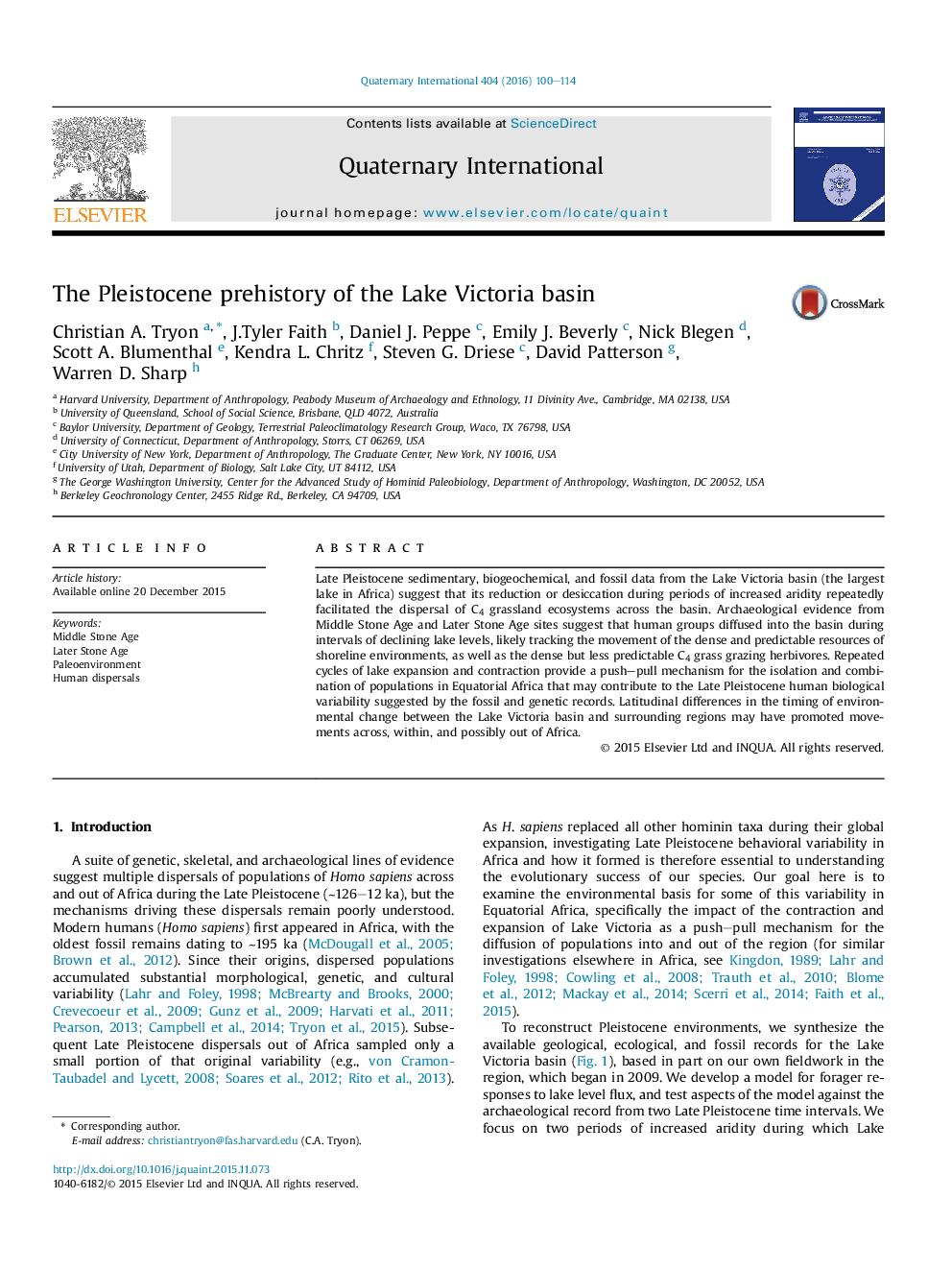| Article ID | Journal | Published Year | Pages | File Type |
|---|---|---|---|---|
| 1040060 | Quaternary International | 2016 | 15 Pages |
Late Pleistocene sedimentary, biogeochemical, and fossil data from the Lake Victoria basin (the largest lake in Africa) suggest that its reduction or desiccation during periods of increased aridity repeatedly facilitated the dispersal of C4 grassland ecosystems across the basin. Archaeological evidence from Middle Stone Age and Later Stone Age sites suggest that human groups diffused into the basin during intervals of declining lake levels, likely tracking the movement of the dense and predictable resources of shoreline environments, as well as the dense but less predictable C4 grass grazing herbivores. Repeated cycles of lake expansion and contraction provide a push–pull mechanism for the isolation and combination of populations in Equatorial Africa that may contribute to the Late Pleistocene human biological variability suggested by the fossil and genetic records. Latitudinal differences in the timing of environmental change between the Lake Victoria basin and surrounding regions may have promoted movements across, within, and possibly out of Africa.
